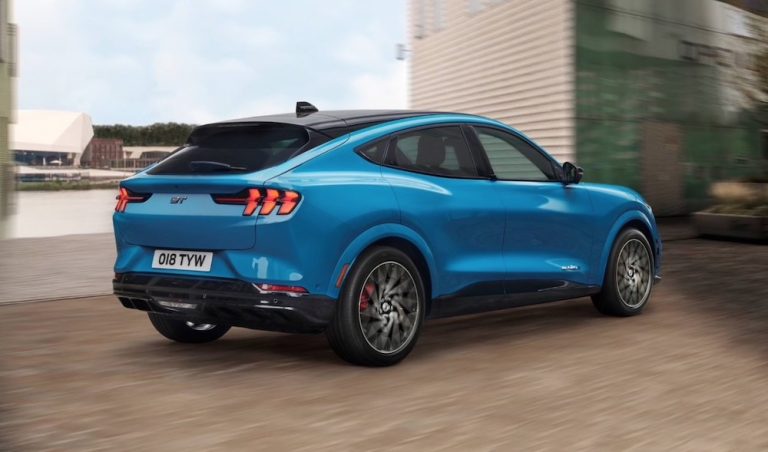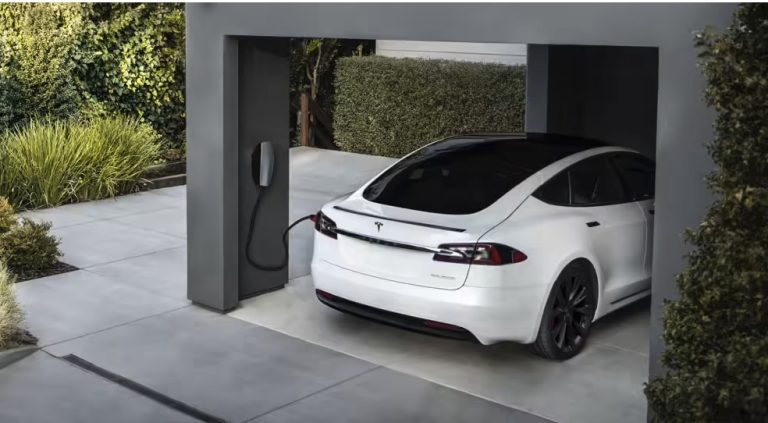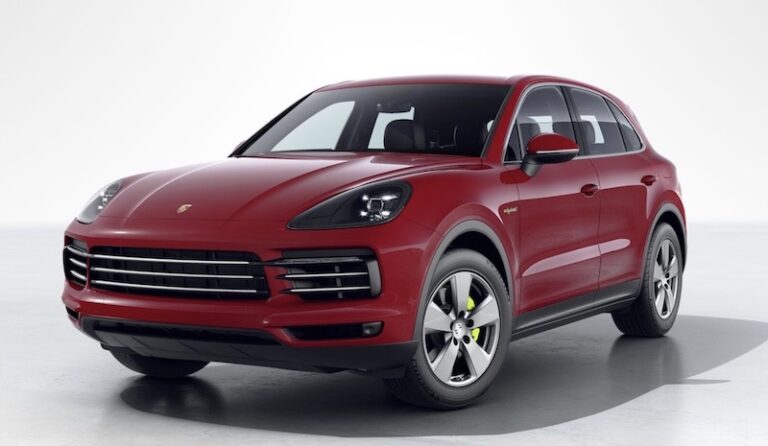Electric Cars: The Basics
For those of you new to zero-emission electric driving, we recommend a read of the following articles:
Sign up to the e-zoomed Electric Living newsletter
The All-Electric Polestar 2 Hatchback
Polestar is a high performance Swedish automotive brand established by Volvo in 1996. Polestar is headquartered close to Gothenburg, Sweden. The genesis of the Polestar brand is linked to motorsport, in particular, Flash Engineering, a Swedish motorsport team. Flash Engineering was rebranded to Polestar Racing in 2005. Polestar was acquired by Volvo Cars in 2015, with the brand being repositioned as an EV brand from 2017. Volvo Cars was acquired by Geely Holding Group in 2010. Geely, a Chinese automotive behemoth also owns Lotus Cars, well known for its luxury sport cars. The company’s portfolio of battery-electric vehicles (BEVs) include:
- All-electric Polestar 2
- All-electric Polestar 3
- All-electric Polestar 4
Volvo Cars, the Swedish luxury vehicles manufacturer, announced in 2017 that Polestar would commence manufacturing high-end performance electric vehicles (EVs) to compete head-on against Tesla. The manufacturer introduced the first Polestar car in October 2017, the limited edition hybrid Polestar 1, inspired by Volvo’s Concept Coupe introduced in 2013. Fast forward to 2019, and Polestar had unveiled its first mass-market 5 door all-electric car, the Polestar 2.
The Polestar 2 interior has the hallmarks of classic Volvo styling with ‘minimalism’ and ‘clean Scandinavian design’ at its core. However, the CEO of Polestar has been quick to point out that the Polestar 2 design has not been limited by traditional Volvo designs based on practicality, comfort and safety. The Polestar 2 has been designed in a more progressive and performance oriented manner. The interiors themes have been curated around three cities as inspiration: Shanghai, Berlin and London.
The all-electric hatchback is perfect for families already familiar with the advantages of owning and driving a Volvo car i.e. a fantastic reputation for safety and quality. Of course, the electric Polestar further enhances this enviable reputation, given the environment-friendly nature of zero-emission vehicles (ZEVs) i.e. no tailpipe pollution!
The Polestar 2 is available in two EV battery options: 69 kWh (standard range) and 78 kWh (long range). The standard range has a claimed zero-tailpipe emission electric range up to 478 km (WLTP) and the long range has an e-range up to 551 km.
Pure electric cars have come a long way over the past decade, with a 500 km EV range now fast becoming the norm. In fact, ‘range anxiety’ is fast disappearing from the narrative on electric driving, as consumers become more confident of the available range and the public EV charging infrastructure.
Even adjusting for real-world driving i.e. weather, road conditions, driving profile, load etc, the Polestar offers excellent pure electric range for short and long distance driving. For the 69 kWh EV battery, expect a real-world range closer to 450 km and for the 78 kWh, a 510 km EV range.
For longer motorway driving trips, the Polestar electric car offers DC charging capability up to 155 kW. The smaller 69 kWh EV variant can be charged up to 130 kW DC (10%-80%: 35 minutes). While the larger 78 kWh EV battery variant can be charged up to 155 kW DC (10%-80%: 35 minutes). Just enough time to get a coffee and have a brief rest before getting along with journey.
The Polestar EV offers a 3-phase 11 kW AC onboard charger as standard. However, given that the majority of homes have single-phase power supply in Ireland, taking advantage of the 11 kW onboard charger will be only for those with access to three-phase EV charging at home, work or at a public destination.
At 11 kW, the 69 kWh EV battery can be fully charged in 7 hours, while the 78 kWh EV battery will take up to 8 hours to fully charge. Single-phase EV charging will take longer (up to 12 hours for the larger EV battery). We at e-zoomed recommend charging overnight at home, when the electricity tariff rates are cheaper.
The Polestar family electric car is available as front-wheel drive (FWD) and an all-wheel drive (AWD). However the AWD is only available with the larger 78 kWh EV battery. In terms of performance, the EV does not disappoint. The Standard Range Single Motor variant can achieve 0-100 km/h in 7.4 seconds (max power: 228 bhp).
The top speed is 160 km/h. The top of the range, Long Range Dual Motor can achieve 0-100 km/h in 4.7 seconds (max power: 402 bhp). The top speed is 205 km/h.
In terms of technology and features, the EV has much to offer either as standard or an option upgrade pack. These include: energy saving heat pump, wireless mobile phone charging, Google built-in, Digital key with pre-climate, 2-zone climate system, over-the-air updates, rear camera, front and rear park assist, keyless entry and more. In terms of practicality, the EV offers a 405 L boot space.
Bottom-line, electric driving is good for the environment and the wallet!
| PROS | CONS |
|---|---|
| Available in two EV battery sizes | Energy saving heat pump not a standard option |
| Good pure electric range and 11 kW AC onboard charger as standard | DC charging limited to 155 kW |
| Available as FWD and AWD | Colour options relatively dull colours |
The All-Electric Polestar 2 Hatchback (credit: Polestar)
| At A Glance | |
|---|---|
| EV Type: | Battery-Electric Vehicle (BEV) |
| Body Type: | Hatchback |
| Engine: | Electric |
| Available In Ireland: | Yes |
| Variants (3 Options) |
|---|
| Polestar 2 Standard Range Single Motor (from € 51,135) |
| Polestar 2 Long Range Single Motor (from € 59,990) |
| Polestar 2 Long Range Dual Motor (from € 63,850) |
| EV Battery & Emissions | |
|---|---|
| EV Battery Type: | Lithium-ion |
| EV Battery Capacity: | Available in two battery sizes: 69 kWh/ 78 kWh |
| Charging: | 150 kW Rapid Charging. On board charger: 11kW AC |
| Charge Port: | Type 2 |
| EV Cable Type: | Type 2 |
| Tailpipe Emissions: | 0g (CO2/km) |
| Battery Warranty: | 8 years or 160,000 km |
| Average Cost Of Residential Charging | |
|---|---|
| Battery net capacity: 16.7 kWh | € 4.00 |
| Battery net capacity: 30.0 kWh | € 7.19 |
| Battery net capacity: 39.2 kWh | € 9.39 |
| Battery net capacity: 45.0 kWh | € 10.78 |
| Battery net capacity: 50.0 kWh | € 11.98 |
| Battery net capacity: 64.0 kWh | € 15.34 |
| Battery net capacity: 71.0 kWh | € 17.01 |
| Battery net capacity: 77.0 kWh | € 18.45 |
| Battery net capacity: 90.0 kWh | € 21.57 |
| Battery net capacity: 100.0 kWh | € 23.97 |
- Note 1: The average cost of residential electricity in Ireland varies depending on the region, supplier and type of energy used. An average for Ireland is 23.97 cents/kWh.
- Note 2: Not all EV manufactures make available the data on net EV battery capacity, and in a number of instances the EV battery capacity advertised, does not state if it is gross or net capacity. In general, usable EV battery capacity is between 85% to 95% of the gross available capacity.
| Charging Times (Overview) | |
|---|---|
| Slow charging AC (3 kW – 3.6 kW): | 6 – 12 hours (dependent on size of EV battery & SOC) |
| Fast charging AC (7 kW – 22 kW): | 3 – 8 hours (dependent on size of EV battery & SoC) |
| Rapid charging AC (43 kW): | 0-80%: 20 mins to 60 mins (dependent on size of EV battery & SoC) |
| Rapid charging DC (50 kW+): | 0-80%: 20 mins to 60 mins (dependent on size of EV battery & SoC) |
| Ultra rapid charging DC (150 kW+): | 0-80% : 20 mins to 40 mins (dependent on size of EV battery & SoC) |
| Tesla Supercharger (120 kW – 250 kW): | 0-80%: up to 25 mins (dependent on size of EV battery & SoC) |
- Note 1: SoC: state of charge
| Dimensions | |
|---|---|
| Height (mm): | 1559 |
| Width (mm): | 2080 |
| Length (mm): | 5453 |
| Wheelbase (mm): | 3210 |
| Turning Cirle (m): | 12.7 |
| Boot Space (L): | N/A |
| Standard Range Single Motor | |
|---|---|
| EV Battery Capacity: | 69 kWh |
| Pure Electric Range (WLTP): | 478 km |
| Electric Energy Consumption (Wh/km): | 171 |
| Charging: | 130 kW DC Rapid Charging (10%-80%: 35 mins). Onboard charger: 11kW AC (0%-100%: 7 hrs) |
| Top Speed: | 160 km/h |
| 0-100 km/h: | 7.4 seconds |
| Drive: | Front-wheel drive (FWD) |
| Electric Motor (kW): | 170 |
| Horsepower (bhp): | 228 |
| Torque (Nm): | 330 |
| Transmission: | Automatic |
| Seats: | 5 |
| Doors: | 5 |
| Unladen Weight (kg): | 2,198 |
| Colours: | 6 |
| NCAP Safety Rating: | Five-Star |
| Long Range Single Motor | |
|---|---|
| EV Battery Capacity: | 78 kWh |
| Pure Electric Range (WLTP): | 551 km |
| Electric Energy Consumption (Wh/km): | 171 |
| Charging: | 155 kW DC Rapid Charging (10%-80%: 35 mins). Onboard charger: 11kW AC (0%-100%: 8 hrs) |
| Top Speed: | 160 km/h |
| 0-100 km/h: | 7.4 seconds |
| Drive: | Front-wheel drive (FWD) |
| Electric Motor (kW): | 170 |
| Horsepower (hp): | 228 |
| Torque (Nm): | 330 |
| Transmission: | Automatic |
| Seats: | 5 |
| Doors: | 5 |
| Unladen Weight (kg): | 2,198 |
| Colours: | 6 |
| NCAP Safety Rating: | Five-Star |
| Long Range Dual Motor | |
|---|---|
| EV Battery Capacity: | 78 kWh |
| Pure Electric Range (WLTP): | 487 km |
| Electric Energy Consumption (Wh/km): | 194 |
| Charging: | 155 kW DC Rapid Charging (10%-80%: 35 mins). Onboard charger: 11kW AC (0%-100%: 8 hrs) |
| Top Speed: | 205 km/h |
| 0-100 km/h: | 4.7 seconds |
| Drive: | All-wheel drive (AWD) |
| Electric Motor (kW): | 300 |
| Horsepower (hp): | 402 |
| Torque (Nm): | 660 |
| Transmission: | Automatic |
| Seats: | 5 |
| Doors: | 5 |
| Unladen Weight (kg): | 2,198 |
| Colours: | 6 |
| NCAP Safety Rating: | Five-Star |
Types Of Electric Vehicles
| Type Of Electric Vehicle (EV) | Description |
| Mild Hybrid Electric Vehicles (MHEVs) | Mild hybrids use both an internal combustion engine (ICE) and electric motor. These cars are also known as ‘self-charging hybrids’. The vehicle uses regenerative braking (recuperated electric energy) to improve the fuel efficiency and to reduce tailpipe emissions (CO2 g/km). However, mild hybrids cannot be charged by an external power source (i.e. EV charger). The recuperated electric energy is also used to boost the the combustion engine enhancing acceleration. Automotive manufactures (OEMs) like Toyota are one of the pioneers in developing and introducing mild hybrid vehicles. The ubiquitous Toyota Prius mild hybrid is an excellent example. Toyota also helped popularise the use of mild hybrids in the premium segment via its wholly owned Lexus brand. |
| Plug-In Hybrid Electric Vehicles (PHEVs) | Plug-in hybrid electric vehicles (PHEVs) aim to achieve the same objectives like a MHEV i.e. increase fuel efficiency and reduce tailpipe emissions. However there is much difference between a PHEV and a MHEV. The PHEV has a larger electric motor and onboard EV battery that is used to assist the internal combustion engine (ICE), but also to propel the vehicle. In a MHEV, the small onboard electric motor does not propel the vehicle. PHEVs come in varied EV battery sizes, but in general, most PHEVs have an EV battery size below 20 kWh. A plug-in electric car is capable of up to 50 km on electric mode. However, some PHEVs are capable of a longer pure electric range. The Volvo XC60 PHEV is a good example of a plug-in hybrid electric vehicle. Moreover, a PHEV EV battery is charged by using an external power source to include, a domestic 3-PIN plug or a dedicated EV charger. |
| Battery-Electric Vehicle (BEV) | A battery-electric vehicle is more commonly referred to as a pure electric car. The EV is ‘pure’, in that, the vehicle only uses electric power for propulsion i.e. a BEV does not have an internal combustion engine (ICE). It is easy to recognise these zero-tailpipe emission green cars, as these vehicles are silent (except for the artificial noise) and do not have a tailpipe! The pure electric vehicles have a much larger onboard EV battery compared to a PHEV. The EV battery on a BEV can be as large as 120 kWh, though an average is 60 kWh. In any case, most BEVs have an EV battery larger than 30 kWh. BEVs also use regenerative braking to improve the vehicle efficiency and electric range. However, the main source for the EV range is the EV battery, which can only be charged using an external power source, like an EV charger. BEVs can vary in electric range. However the more recent BEVs have a range between 300 to 500 km (WLTP) on a single charge. As an example, the all-electric VW ID.3 has a range up to 540 km. |
While e-zoomed uses reasonable efforts to provide accurate and up-to-date information, some of the information provided is gathered from third parties and has not been independently verified by e-zoomed. While the information from the third party sources is believed to be reliable, no warranty, express or implied, is made by e-zoomed regarding the accuracy, adequacy, completeness, legality, reliability or usefulness of any information. This disclaimer applies to both isolated and aggregate uses of this information.






























